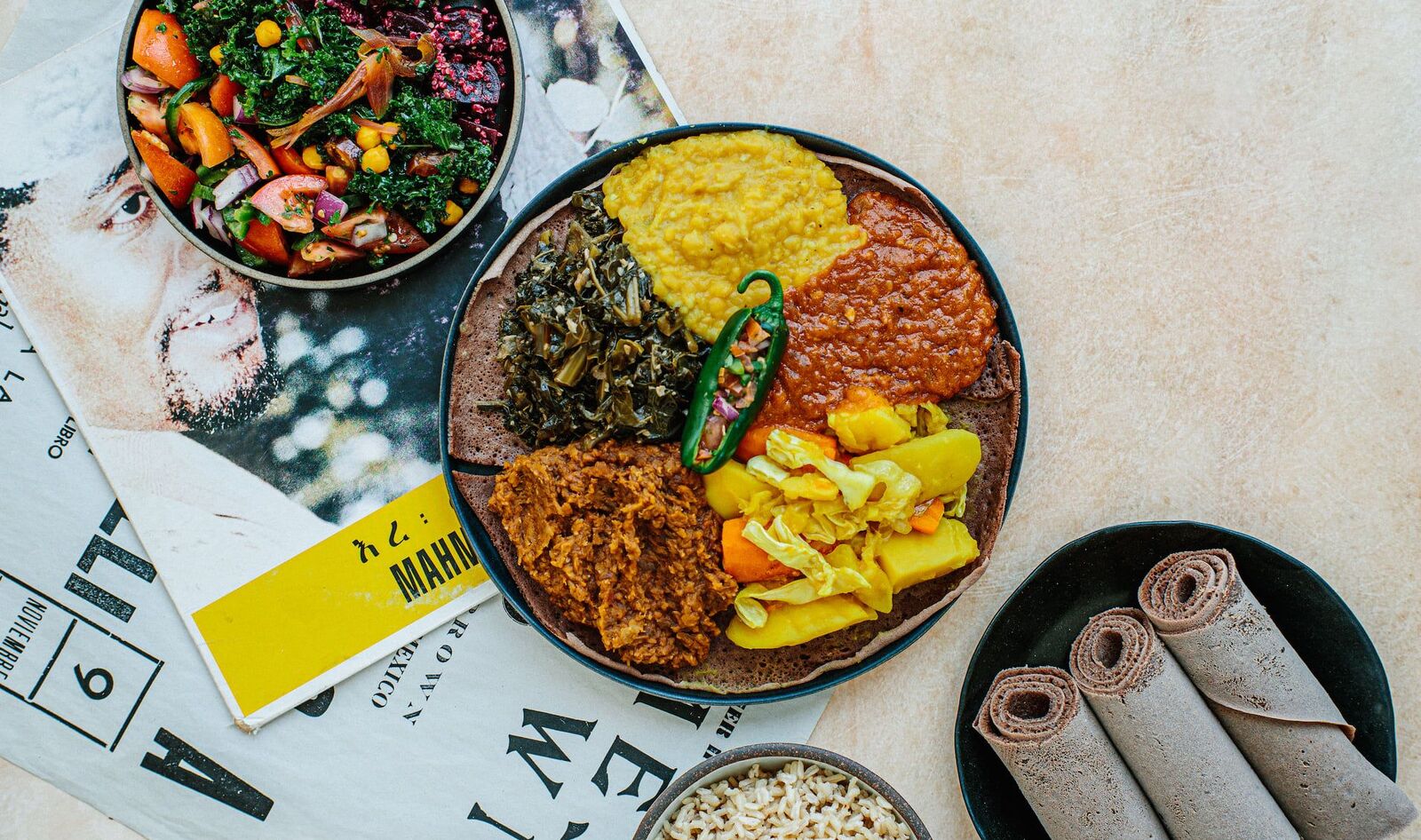Ethiopian and Jamaican cuisine are compared in terms of origin, spiciness, flavor, culinary applications, and accessibility. The article highlights the blend of African, Arabic, and Indian influences in Ethiopian cuisine and the use of berbere and injera flatbread, among others. Meanwhile, Jamaican jerk cuisine is characterised by the use of allspice, jerk seasoning, and Scotch bonnet peppers. While Ethiopian dishes have a varied and complex flavour profile, Jamaican jerk dishes combine sweet, smoky, and spicy flavours. Both cuisines offer vegetarian options, but Ethiopian dishes are more suited to plant-based diets. Jamaican jerk dishes are also more widely available in restaurants and shops, and easy to recreate at home through pre-made seasoning mixes and sauces.
Ethiopian vs. Jamaican Jerk: A Taste Test of Spicy and Flavorful Traditional Dishes
When it comes to flavorful traditional dishes, Ethiopian and Jamaican cuisine are two of the most popular in the world. Both cuisines have unique and bold flavors, which make them stand out from other types of cuisines. In this article, we will compare Ethiopian and Jamaican jerk dishes.
1. Origin
Ethiopian cuisine is a blend of African, Arabic, and Indian influences. It is characterized by the use of spices, such as berbere, a blend of chili peppers, garlic, ginger, and other herbs. Ethiopian cuisine also features injera, which is a sourdough flatbread made from teff flour, and often used to scoop up stews and other dishes.
On the other hand, Jamaican jerk cuisine is a product of the island’s multicultural history, combining African, Indian, and European influences. It is characterized by the use of allspice, a pimento berry native to Jamaica, and other spices, such as thyme, scotch bonnet peppers, and ginger. Jerk dishes are typically grilled, smoked, or slow-cooked over wood fires.
2. Spiciness
Ethiopian cuisine is known for its spicy flavor. The use of berbere gives most dishes a bold, fiery taste. The level of heat can be adjusted depending on the amount of berbere used in a dish. Typically, Ethiopian dishes are very rich and spicy, but not overwhelmingly hot.
Jamaican jerk dishes are also known for their spiciness. Scotch bonnet peppers are the primary source of heat in most jerk dishes. They are even hotter than jalapenos, but provide a fruity, sweet flavor in addition to heat. Jerk dishes can range from mild to extremely hot, depending on the amount of peppers used.
3. Flavor
Ethiopian cuisine is generally characterized by complexity, with dishes featuring a combination of bold flavors such as sour and spicy. One of the most popular Ethiopian dishes, injera, is sour without being particularly spicy. Meanwhile, meat, poultry or lentils, are cooked with spice pastes, sauces, and chili oils which make the dishes layered with flavors.
Jamaican jerk cuisine, on the other hand, is characterized by a combination of sweet, smoky, and spicy flavors. Allspice is used to give jerk dishes a signature sweetness, while wood fire cooking methods add a smoky flavor. Scotch bonnet peppers contribute to the spiciness of the dish, while thyme and other herbs add depth of flavor.
4. Culinary Applications
Ethiopian cuisine offers a wide range of vegetarian options, which are perfect for those who prefer plant-based diets. Injera is also gluten-free, making it a great alternative to traditional breads. Ethiopian dishes are typically eaten with the hands, using injera to scoop up stews or other dishes.
Jamaican jerk cuisine is often used in barbecue dishes, such as jerk chicken or jerk pork, but it can also be used in vegetarian dishes or as a seasoning for tofu or tempeh. Jerk dishes are traditionally served with rice and peas, a staple in Jamaican cuisine.
5. Accessibility
Ethiopian cuisine might be challenging to find outside of larger cities or areas with a large Ethiopian population. However, it is relatively easy to find recipes and spice blends online or in specialty stores, which can be used to recreate dishes at home.
Jamaican jerk dishes are more widely available in restaurants and specialty stores, especially in areas with a large Caribbean population. The accessibility of pre-made jerk seasoning mixes, already prepared sauces or glazes, also makes it easy to recreate the dishes at home.
Conclusion
Ethiopian and Jamaican cuisine are both known for their spicy and flavorful dishes. While both cuisines utilize bold and complex flavors, the spices and ingredients used are vastly different, which makes for distinct flavor profiles. Whether you prefer Ethiopian injera or Jamaican jerk chicken or a mix of both, there are endless possibilities for discovering new flavors and tastes.
